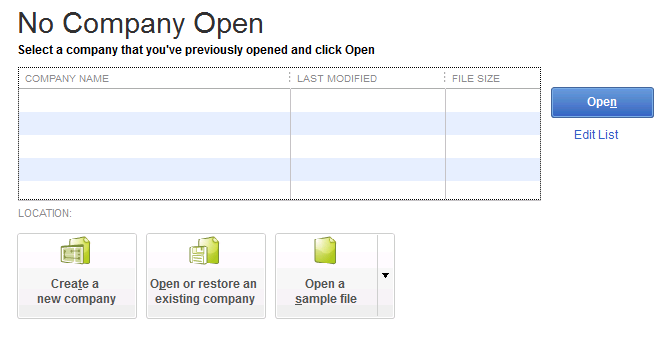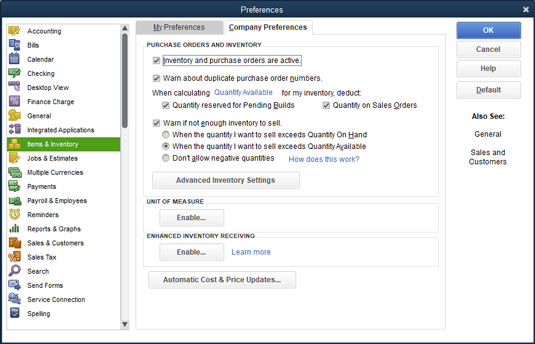
With features designed to meet the specialized requirements of different industries, accounting software systems have developed to provide streamlined workflows and increased productivity. Manufacturing processes can be revolutionized by using powerful tools like QuickBooks Desktop Enterprise for Manufacturing and Wholesale. Based on official Intuit support documents, this article takes you step-by-step through the process of setting up QuickBooks Manufacturing for your company.
Better cost management and operational efficiency can result from using QuickBooks Manufacturing to streamline the tracking of inventory costs, completed goods, and raw materials. To set up QuickBooks Manufacturing and optimize your workflow, adhere to our comprehensive instructions.
How does QuickBooks Work for Manufacturing Companies?
QuickBooks is a software that efficiently manages inventory quantities for manufacturing businesses, including tracking raw materials.
It categorizes inventory into four groups:
- Inventory items.
- Non-inventory items.
- Services.
- Bundles.
Businesses can optimize raw material management and maintain a steady production flow by utilizing QuickBooks’ non-inventory item tracking capabilities.
QuickBooks Enterprise also enhances visibility into purchase orders, allowing users to directly assign receivers for improved efficiency.
QuickBooks’ manufacturing feature provides precise calculation of actual materials costs by incorporating duties, insurance, and other miscellaneous expenses, helping businesses make informed financial decisions.
With QuickBooks’ Advanced Pricing features, businesses can customize and automate item pricing and information, streamlining operations and ensuring accurate pricing strategies.
Steps to Set up QuickBooks Manufacturing and Streamlining of its Operations
Step 1: Purchase and Install QuickBooks Desktop Enterprise
Go to the official QuickBooks website and purchase QuickBooks Desktop Enterprise for Manufacturing and Wholesale to get started. Installing the software on your PC is as simple as following the instructions.
Step 2: Create Your Company File
Create a new company file in QuickBooks by going to the File option and then click on the New Company option from the file menu.

Make sure to choose the Manufacturing and the Wholesale industry and provide your company details as requested.
Once the company file has been created, so now you have to navigate to the Preferences and then select Items & Inventory from it. From the list of menu of items and inventory select the Company Preferences from it and turn on the inventory tracking. Turn on the Purchase orders and inventory to make it in active condition.
Step 3: Setting up of Inventory Items
- First you have to navigate to the list menu and then click on the item list option.
- Select the Item option and select the new option from the drop down menu of Item.
- As a type of item you have to select the inventory Part.
- Now you have to fill in all the details for the inventory item like the name of the item, description of the item, sale price and cost of the item and all the important relevant information about the item.
- Now at last hit the save button in order to save all the changes.
Step 4: Configure all the Assembly Items
- Navigate to the item list button and click on it. Select the Item option from the drop down menu and hit the new tab from it.
- Now you have to select inventory assembly as the type of item.
- Give the assembly item a name and a description by entering it.
- Select the inventory items from the list by clicking on “Add Component” and adding the component items that make up the assembly.
- Indicate the number of pieces needed for each component assembly.
- The assembly item should be saved.
Step 5: Setting up of Vendors and Customers
- Navigate to the vendors tab and select the vendor centre in order to set up the vendors for the raw materials procurement.
- Now you have to establish your customer base by navigating to the customers and then select the customer centre from it.
Step 6: Document the Process of Manufacturing
By using the build assemblies function the QuickBooks allows you to track the process of manufacturing.
- Navigate to the vendors tab and then select the inventory activities.
- From the inventory activities menu select the build assemblies in order to document the production of assembly items.
Why should you use QuickBooks for a Manufacturing Company?
QuickBooks Manufacturing can be a suitable choice for small to medium businesses that require specific industry-specific features and comprehensive inventory management tools. Here are some scenarios where QuickBooks Manufacturing might be particularly beneficial:
- Complex Manufacturing Processes: If your business manufactures products with multiple intricate parts, QuickBooks Manufacturing provides the ability to define quantities for specific assembly procedures, making it easier to track and cost items that require more materials.
- Customized Pricing Rules: QuickBooks Manufacturing allows you to personalize prices based on specific clients, customer types, and individual sales. This feature is useful for businesses that need to offer tailored pricing strategies.
- Detailed Sales Reporting: QuickBooks Manufacturing enables you to create financial reports based on representatives, individual items, product types, or customers. This granular level of reporting can provide valuable insights into sales performance.
- Inventory Management Needs: If your business lacks advanced inventory software, QuickBooks Manufacturing offers robust inventory management tools. These tools allow you to closely monitor your inventory count and ensure timely restocking.
- Streamlined Operations: QuickBooks Manufacturing integrates with other QuickBooks products, enabling seamless data flow and eliminating the need for manual data entry. This integration can streamline your business operations and improve efficiency.
Conclusion
With its dynamic features, QuickBooks Manufacturing can dramatically improve your manufacturing processes by guaranteeing precise cost tracking and inventory control. By following these procedures, QuickBooks will help you maximize your business’s potential.
Frequently Asked Questions
Ques: Is QuickBooks able to support manufacturing businesses?
Ans: Indeed, the unique demands of manufacturing enterprises are catered to in QuickBooks Desktop Enterprise for Manufacturing and Wholesale.
Ques: How do I set up inventory in QuickBooks Manufacturing?
Ans: In order to set up inventory, items must be created under the Lists menu you have to select the Item List. Every object is a product or raw material.
Ques: In QuickBooks Manufacturing, what is an assembly item?
Ans: A completed product made up of several component items listed in your inventory is represented as an assembly item in QuickBooks Manufacturing.
Ques: Does manufacturing use QuickBooks?
Ans: Indeed. The following industry-specific editions of QuickBooks Desktop Enterprise are available: Construction; Manufacturing/Wholesale.
Ques: What kind of accounting does the manufacturing industry use?
Ans: In the manufacturing industry, cost accounting is essential since it entails closely tracking the expenses related to creating a particular product. Every expense incurred, including those for labour and overhead, is meticulously documented, starting with the cost of raw materials.



 +1-800-596-0806
+1-800-596-0806